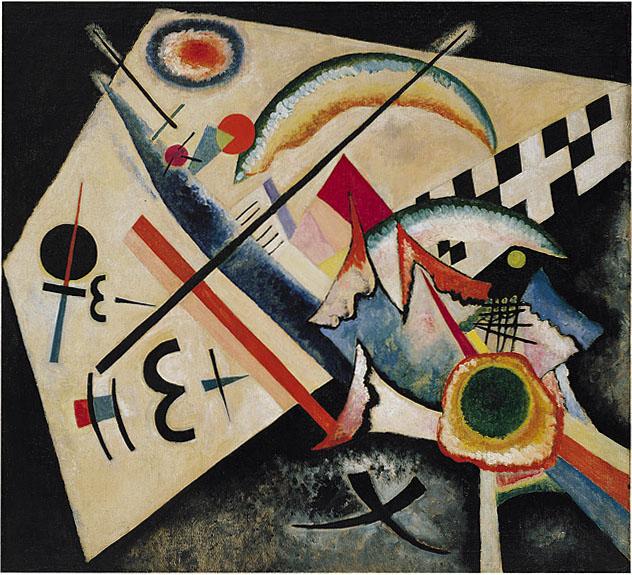He was born in Moscow, 1866, and died in Neuilly-sur-Seine, France, in 1944: in his works used styles and color techniques, at that time, largely unexplored. He produced his first drawing (sketches and anatomical studies) when he was thirty. One of the most famous phrases and quoted by Wassily Kandinsky is contained in his essay The Spiritual in art, 1911: "Color is the keyboard, the eyes are the hammer, the soul is the piano with many strings. The artist is the hand that plays, touching one key or another, to cause vibrations in the soul. "
During his childhood he lived in Odessa. Kandinsky enrolled at the University of Moscow, and studied Economics and Law. He was successful in his profession: he was in fact offered the chair of Roman Law at the University of Dorpat, who refused.
In 1896 Kandinsky settled in Monaco, and studied first in the private school of Anton Azbe ( a Slovene realist painter and painting teacher) and at the Academy of Fine Arts. He returned to Monaco in 1914, after the start of the First World War.
Kandinsky was in disagreement with the official theories on art in the Communist Moscow and in 1921 returned to Germany, where he taught art and architecture at the Bauhaus school, until, in 1933, it was closed by the Nazi regime. He then moved to France, where he remained for the rest of his life and where he produced most of his major works. In 1939 he acquired French citizenship; in 1944 he died in Neuilly-sur-Seine.
Painter Wassily Kandinsky. Painting. White cross. 1922 year
White cross- 1922 - Oil on canvas - Venice. Italy. Peggy Guggenheim Collection
The White Cross. The title of this work, puts in evidence a detail of the composition, the White Cross at the top right, derived from recurring motif in this period of the sign of the board: here, the space resulting in negative becomes positive form.
The paint visualization: After visulize this white cross, the senses over the entire paint surface is of a proliferation of other crosses, more or less obvious. Though Kandinsky,
like Kazimir Malevich, uses this as an abstract element, the cross is emotional and symbolic. Kandinsky used in unexpected ways the tendency for the viewer to review the images in a concrete way: he inserts in the painting two signs that resemble the number three inverted and superimposed on the directional arrows; the change in orientation of the forms suggests a rotation of the canvas. The sense of anti-gravity floating shapes and placement of the elements of a plan in a fund indefinite reveal affinities with the work Suprematist Malevich.







Comments 0
Say something